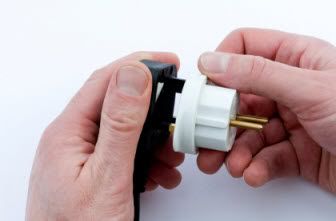
All set to enjoy your vacation overseas? You might be sufficiently armed with the required travel documents and travel gear to make your journey comfortable, but the anticipation and excitement of exploring a new country might cause you to overlook the finer details; like carrying the necessary equipments to make your electrical appliances work safely overseas. For a hassle-free means to stay connected while overseas, it is important that you carry the right voltage converter and adapter for your electronic devices. You need to find out what type of voltage is used in the country you’re traveling to and what type of adapter or plug is needed to plug your appliances into the outlet. Otherwise, you may end up with an overheated curling iron (just imagine the after-effects of this on your hair!) or a fried camera charger on your Europe tour.
The first thing that you need to do is to select the electronic appliances which you really need to bring along with you. You probably don’t really need all them on your vacation. Most hotels offer hair dryers and irons and you can use manual razors and toothbrushes instead of their electric counterparts. If you plan on staying in one country for a while, you might want to buy a hair dryer or electric razor there. Battery-operated appliances are another option if you’re willing to bring plenty of replacements. Now there are certain devices that you simply need to carry like your laptop or cell phone, make sure you read the following tips to make your appliance work safely overseas.
• Before buying a voltage converter for the appliance that you are planning to carry with you, check the label or the owner’s manual on the appliance to confirm the voltage at which it is designed to work with. In North America, parts of South and Central America and the Caribbean, the electrical appliances work at 110 volts or 120 volts, while in most other countries they work between 220 volts – 240 volts. Find a complete list of voltage requirements by country here.
• Most high end electronics like laptop computers and digital cameras come pre-equipped to handle voltage that is between 100 and 240 volts. In that case, you won’t need to buy a voltage converter; you will just need a plug adapter. An adapter allows you to plug your appliance into another type of electronic socket. Plug adapters do not convert voltage; they only allow a foreign plug configuration to be compliant with the visiting country’s specifications. For example: to fit a flat-pinned (North American) plug into a round-pinned (European/Asian) outlet. Plug adapters are usually plastic components that fit over the existing electrical plug and are used when two countries operate on the same voltage, but the outlets might not take the same shape of plug. There are at least 13 different configurations around the world, all needing a different adapter, and some countries have several different configurations within their borders. To see what kind of adapter you’ll need for your destination, check out the Electrical Connection Wizard at Magellan’s.
• Even if you buy the right voltage converter, it is important to note that electronic devices in North America, parts of South and Central America and the Caribbean operate at 60-cycles-per-second electricity and are not designed to work at 50-cycles-per-second electricity found in most countries. Most appliances will work on both frequencies, but check your label or owner’s manual to be sure; otherwise, you run the risk of burning out your appliance even if you have the right voltage converter. However, most modern electronic equipment, including battery chargers, computers, printers, stereos, tape and CD players, VCR/DVD players, etc., is not affected by the difference in frequency cycles.
• It is recommended that the converter be greater than your appliance’s wattage by at least 10 percent to guarantee its safe operation. Wattage refers to the amount of electricity used by a device. Most devices have a label showing the wattage. If the wattage is not specified on the label, the voltage and amperage usually are listed and can be used to determine the wattage using a simple formula. Multiply the voltage by the amperage (amps or A) to calculate the wattage.
Most travel stores and electronic stores sell inexpensive voltage converters and adapters. If you are planning a trip to Europe this summer, make sure you do your homework based on the above listed suggestions before you purchase a converter or an adapter.




There are no comments.